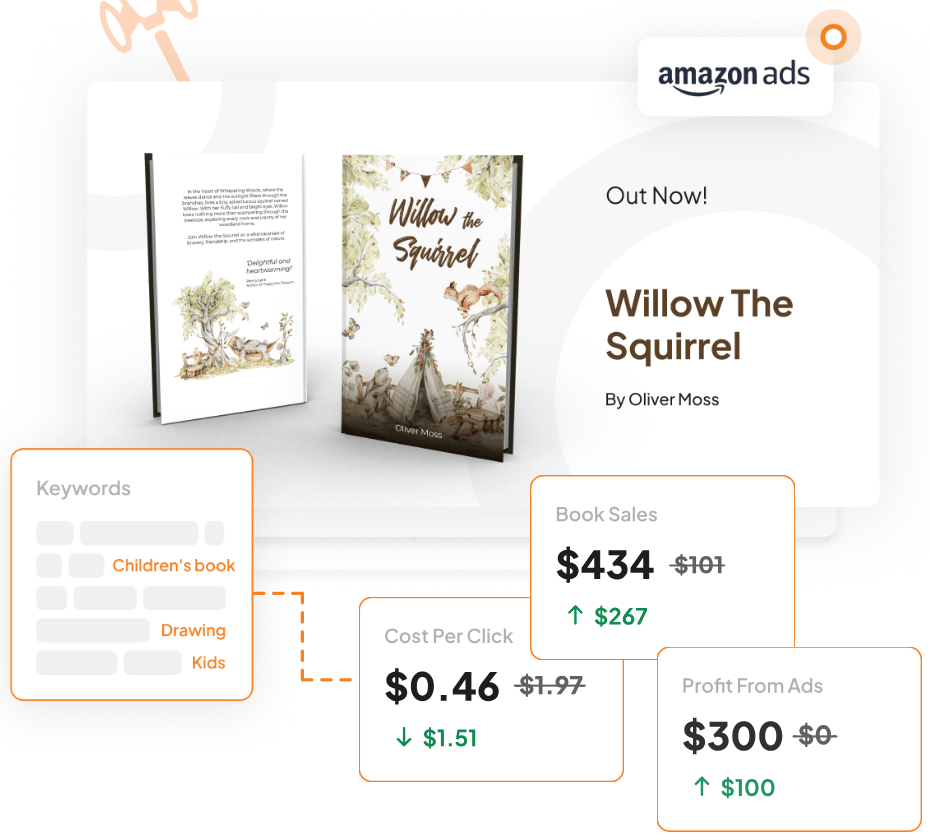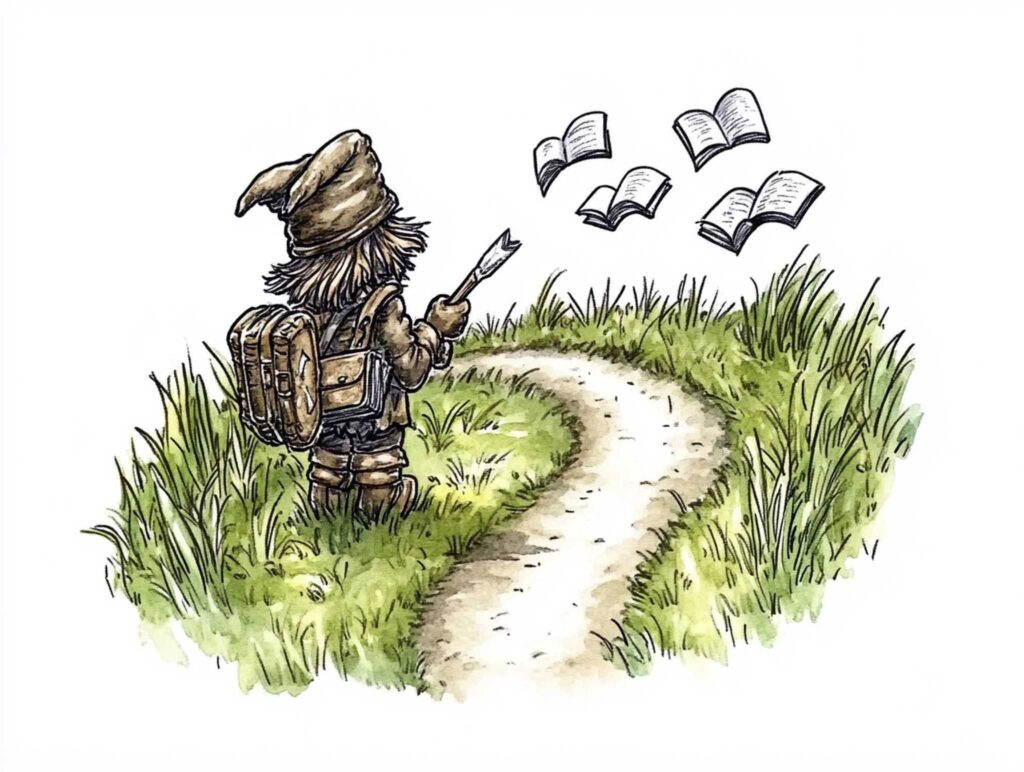Have you ever opened a book or an article, read the first sentence, and then decided it wasn’t worth your time? This common experience highlights a crucial element in writing: the first line engagement.
It’s the writer’s first handshake with the reader, and if that handshake is weak, the reader may not stick around for more. In this blog post, we’ll explore why your opening sentence might be losing readers and how you can craft a captivating first line that draws them in.
We’ll delve into common opening sentence mistakes and share actionable tips to ensure your writing starts off strong.
No marketing platform? No social following? No problem!
Publisher Rocket helps you market your debut novel like a pro.
It’s a gamechanger for debut authors – try it today!


Understanding the Importance of Your First Line Engagement
The opening sentence is more than just an introduction—it’s an invitation. It sets the tone, hints at the style, and gives readers a taste of what’s to come.
In the crowded landscape of digital content, where attention spans are shorter than ever, a captivating first line can be the difference between a reader staying or clicking away. Let’s explore why these first impressions matter and how they play a pivotal role in retaining your audience.
Why First Impressions Matter in Writing
First impressions in writing are akin to the spark of a first date. They ignite curiosity and set the stage for what follows. A compelling opening sentence can captivate readers’ imaginations, making them eager to dive deeper into the narrative.
On the contrary, a dull or confusing start can create a barrier, causing potential readers to disengage. Remember, the initial words of your piece are your chance to make a memorable impression, and that opportunity doesn’t come twice.
Consider reading the first lines of your favorite books. Analyze what makes them stand out. Is it the vivid imagery, the sense of mystery, or the immediate connection with the reader’s emotions? Use these insights as inspiration for your writing.
The Role of the Opening Sentence in Reader Retention
Your opening sentence acts as a hook. Its purpose is to seize attention and hold it firmly. In an age where content is consumed rapidly, the first line’s power lies in its ability to promise something intriguing or valuable.
A well-crafted opening piques interest and builds trust with your audience, signalling that the rest of the content will be worth their time. Thus, mastering the art of the opening sentence is essential for maintaining reader engagement throughout your piece.

Common Opening Sentence Mistakes to Avoid
Even seasoned writers can fall into the trap of crafting ineffective opening sentences. Recognizing and avoiding these pitfalls can significantly enhance your writing. Let’s examine some frequent opening sentence mistakes and how to avoid them.
Overly Complex Language and Jargon
While sophisticated vocabulary can showcase your knowledge, it can also alienate readers if overused. An opening sentence laden with jargon or complex language may confuse rather than captivate.
Aim for clarity and simplicity to ensure your message is accessible to a broader audience. Consider whether your word choice serves the story or merely complicates it.
Before finalizing your first line, read it aloud. If it feels awkward or cumbersome, it might benefit from simplification. Aim for a balance between eloquence and ease of understanding.
Google Docs is for notes. Scrivener is for novels. Upgrade your writing game and try it for free today!

Lack of Clarity and Focus
An unfocused or ambiguous opening sentence can leave readers puzzled about the direction of your piece. It’s crucial to establish a clear intent from the start.
A concise and focused opening provides a roadmap for readers, guiding them into the heart of your narrative. Avoid vague statements that fail to communicate your main idea effectively.
Failure to Hook the Reader Immediately
In the competitive world of content, failing to hook your reader immediately is a missed opportunity. The opening sentence should act as a magnet, attracting readers with intrigue or promise.
Consider starting with a provocative statement, an unusual fact, or a relatable scenario that resonates with your audience. The goal is to ignite curiosity and compel readers to continue exploring your work.
Experiment with writing several different opening lines for the same piece. Please share them with peers or mentors to gather the most engaging feedback. This practice can reveal surprising insights about what captures attention.

Crafting Captivating First Lines
Creating a captivating first line is both an art and a science. It requires a blend of creativity and strategic thinking. Let’s explore techniques that can help you write openings that attract and retain your readers’ interest.
Using Vivid Imagery and Strong Verbs
Vivid imagery and strong verbs can transform an ordinary sentence into a powerful opening. Descriptive language paints a picture in the reader’s mind, making the scene come alive.
By using dynamic verbs, you infuse energy and movement into your prose, which can be particularly effective in grabbing attention. Remember, the goal is to evoke emotions and create an immediate connection.
Starting with a Question or Provocative Statement
Questions and provocative statements are excellent tools for engaging readers immediately. A well-posed question invites readers to ponder and seek answers within your text.
Similarly, a bold statement can challenge assumptions or provoke thought, compelling readers to delve deeper. These techniques stimulate curiosity, encouraging readers to continue their journey with your writing.
Establishing a Relatable Context or Scenario
Opening with a relatable context or scenario can create an instant bond with your audience. When readers see themselves reflected in your words, they’re more likely to invest emotionally in the content.
Whether it’s a shared experience or a universal truth, relatability fosters empathy and interest. Consider how your opening can resonate with your readers’ everyday experiences or aspirations.
Writing Strategies for Better Engagement
Enhancing first line engagement involves more than just the opening sentence itself. It requires a holistic approach to your writing strategy. Let’s delve into methods that can elevate your content and keep readers engaged from start to finish.

The Power of Storytelling in Your Opening
Storytelling is a timeless technique that captivates audiences across cultures and generations. You invite readers into a world of imagination and possibility by weaving a narrative into your opening.
Stories create emotional connections, making your content memorable and impactful. Whether it’s a personal anecdote or a fictional tale, storytelling can set the stage for a compelling read.
Experimenting with Different Styles and Formats
Writing is an evolving craft; experimentation is key to discovering what resonates with your audience. Try varying your style and format to see what garners the most engagement.
Each approach offers unique benefits, from conversational tones to formal structures. You can refine your technique and find your distinctive voice by being open to change.
| Style | Benefits |
|---|---|
| Conversational | Creates a friendly and approachable tone, fostering reader connection. |
| Formal | Conveys authority and expertise, appealing to professional audiences. |
| Narrative | Engages readers through storytelling, enhancing emotional investment. |
Utilizing Feedback and Revising Your Work
Feedback is a valuable resource for improving your writing. By seeking input from peers, mentors, or even readers, you can gain insights into how your opening lines are perceived.
Use this feedback to make informed revisions, enhancing clarity and impact. Remember, writing is a process, and refinement is a crucial step toward mastery.
Feeling lost with your debut novel?
Fiverr Pro connects you with expert editors, designers, and marketers – everything you need to get your book ready for success!

Encouragement to Embrace the Journey of Writing
Writing is not just a skill; it’s a journey of self-discovery and growth. Embracing this journey can lead to profound personal and professional development.
Let’s explore how building a supportive community and committing to continuous improvement can enrich your writing experience.
Building a Community of Support Among Writers
Writing can be a solitary pursuit, but connecting with a community of fellow writers can provide encouragement and inspiration. Sharing experiences, challenges, and successes fosters a sense of camaraderie.
Whether through writing groups, online forums, or social media, these connections offer valuable support and motivation. Remember, you’re not alone on this journey; collaboration can lead to greater creativity and fulfilment.
Attend local writing workshops or join online writing communities to meet like-minded individuals. Engaging with others can offer fresh perspectives and motivate you to keep honing your craft.
Continuous Improvement and Learning from Mistakes
Every writer encounters setbacks and mistakes, but these moments are growth opportunities. Embrace them as learning experiences that contribute to your development.
By analyzing what didn’t work and why, you can make adjustments and improve your technique. Continuous improvement is the hallmark of a dedicated writer, and each step forward brings you closer to achieving your goals.
In conclusion, the journey of writing is one of exploration and evolution. By focusing on first-line engagement and applying these strategies, you can enhance your writing and connect more deeply with your readers.
Remember, every writer has the potential to craft compelling narratives that captivate and inspire. So, take a deep breath, embrace the challenge, and let your words shine.








